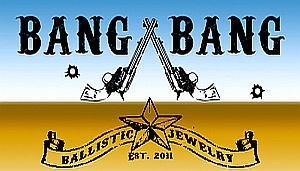The Book Of John
John’s father was called Zebedee. And John had a brother called James, who became also one of Jesus’ *disciples (Matthew 4:21; Mark 1:19-20; Luke 5:10). The family fished on Lake *Galilee. Zebedee owned a boat. He employed men to help with his business.
Jesus called John and James: the ‘Sons of Thunder’. Perhaps he gave them this name because they became angry quickly. For example, they wanted God to destroy a village in *Samaria. This was because the people there had not wanted Jesus to enter the village (Luke 9:52-56).
Simon Peter, who was their partner in the business, became also a disciple of Jesus (Luke 5:1-11). Simon Peter, James and John were Jesus’ special friends. They were the only disciples with Jesus when he raised Jairus’ daughter from death (Mark 5:37). On another occasion, Jesus took Simon Peter, James and John up a mountain. There, they saw him as he talked with Moses and Elijah. They heard God’s voice. God said that Jesus was his Son. And they must listen to Jesus (Mark 9:2-12). And on the night before Jesus died, John and Simon Peter made the arrangements for the Passover meal (Luke 22:8).
So John knew Jesus very well.
John did not refer to himself by his name in his Gospel. However, there are many references to ‘the disciple whom Jesus loved’. John did not mention this disciple’s name. Many people think that this disciple was John.
The purpose of John’s Gospel:
John wanted his readers to believe ‘that Jesus is the Messiah, God’s Son’ (John 20:31). That is why he wrote his Gospel.
Matthew, Mark and Luke recorded many miracles in their Gospels. But John chose to record only 7 miracles. He called them ‘signs’. A sign is something that gives evidence. The miracles gave evidence that Jesus is God’s Son.
John also emphasised that Jesus was human. John recorded that Jesus was tired (John 4:6). John also recorded that Jesus needed food (John 4:31). Jesus was very sad when his friend Lazarus died. At that time, Jesus cried (John 11:35). On another occasion, Jesus became angry with the people who did business in the Temple (John 2:15). And John also recorded that Jesus was thirsty (John 19:28).
Jesus was not half human and half God. He was completely human and completely God, too.
Many people agree that John emphasized this for a particular reason. In the early church, some people were teaching false beliefs about Jesus.
One group taught that Jesus was not really God. They said that he was just a man. They believed that the Holy Spirit entered him at his baptism. But before he died, the Holy Spirit left him. Another group taught that Jesus was not really a man. They said that he did not have a physical body. They believed that he was a spirit. And they believed that he only seemed to be human. Both these groups were wrong!
John and the other disciples had lived with Jesus for about three years. John knew that Jesus was a real man. Also John had seen the miracles that Jesus did. John watched Jesus die on a cross. And John had also seen Jesus after he (Jesus) had become alive again. John knew that Jesus had defeated death. And John had seen Jesus rise up to heaven.
So John knew that Jesus was a real man. But Jesus was and is also God’s Son. John wrote his Gospel to prove this.
John and the other *Gospels
In many ways, John’s Gospel is different from the other three Gospels. John did not include any stories about Jesus’ birth or his baptism. John only recorded 7 miracles, which he called ‘signs’. John did not include any parables (stories which Jesus told to teach something about God). But John recorded many long speeches that Jesus made.
The writer Eusebius (about AD 260-339) believed that John knew about the other three Gospels. But when he read them, John had not yet written his Gospel. He was still just talking to people about his life with Jesus. John agreed that the other Gospels were true accounts.
But Jesus was already preaching before King Herod put John the Baptist in prison. The other Gospels did not include an account of this. They recorded much about what Jesus did in Galilee. Also, they recorded what Jesus did in Jerusalem just before his death. But Jesus went to Jerusalem at other times, too. So John provided the facts that were missing from the other Gospels. He used information that they did not have. John’s account did not disagree with the other Gospels. It added different information, so that we can understand more about Jesus.
The second century writer, Clement, from Alexandria, called John’s Gospel a ‘Spiritual Gospel’. In some ways, he was right. John did not record just facts about Jesus. John had thought much about what Jesus had said. And John had thought much about the miracles that he had seen. He wanted to explain the spiritual meaning of Jesus’ words and acts.
But John also included many physical details. For example, the loaves that Jesus used to feed 5000 people were ‘barley loaves’ (John 6:9). He recorded the distance that the disciples had traveled across the lake (John 6:19). And he remembered how the smell of the perfume filled the house at Bethany (John 11:32). These details do not seem important. But they are memories of a person who was present at these events. So John’s Gospel is not just a *spiritual book. It is the personal account of someone who had seen these events.










